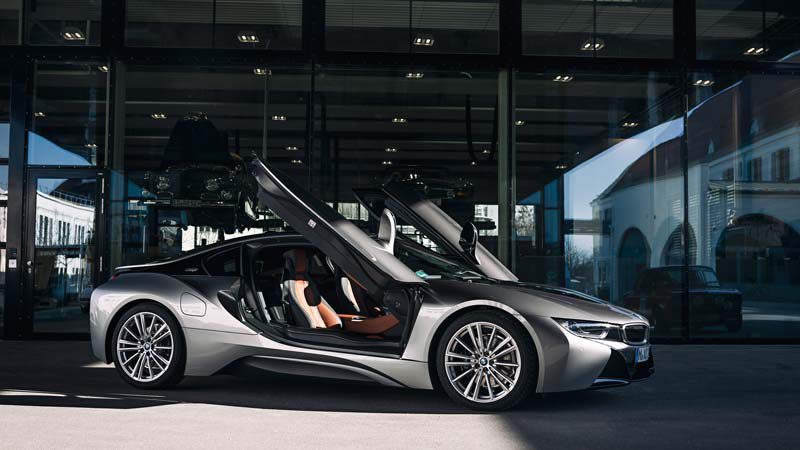German carmaker BMW has heralded the end of production for the BMW i8 plug-in hybrid, after six years on the market and 20,000 units sold.
The i8, when first introduced, was hoped to be a reflection of BMW’s mantra of “ultimate driving machine” but will now give way to a generation of new electric and plug-in hybrid vehicles as the German car maker undertakes its “Number One > Next” strategy.
Its obvious replacement will be the newest concept from BMW, the all-electric gran coupé i4 which will go into production in 2021.
While it will only become clear in a few years whether the plug-in hybrid sportscar i8 will have what it takes to become an iconic classic, for now it is clear that its days are numbered.
In 2009 BMW announced the still futuristic sports car with the “Concept Vision Efficient Dynamics”. With an unconventional sporty design and a 356 horsepower plug-in hybrid drive, the 2 + 2-seater caused a sensation by resolving the conflict of goals of driving pleasure and efficiency with its 3.7 litre/100km consumption figures.

It was to become the flagship of the BMW i sub-brand founded in 2010, which was to pave the way for the brand into an ecologically more correct future with electrified drive technology and regenerative lightweight carbon components.
First introduced as a concept at the 2011 Frankfurt motor show, the plug-in hybrid i8 became a forerunner in its class and as a concept featured in the fourth Mission: Impossible film, “Mission: Impossible – Ghost Protocol”
It became a reality in the summer of 2014 when the first i8 handcrafted in Leipzig were handed over to customers in Munich.
Although the i8 seemed to some the perfect combination of electric torque and fuel efficiency, with a sportscar spirit, it did not unleash the desired reaction.
Critics complained it was not sporty enough, while others were not environmentally friendly in practice as an eco-mobile. While its battery means the i8 can drive over 50 kilometres with zero tailpipe emissions, the three-cylinder engine in practice used seven litres of petrol or more per 100 kilometres.
Anyway, with a price of $A318,900 before on-roads was an expensive model even for BMW standards and was never intended as a car for the masses.
From the outset, the drive technology may have seemed progressive, but in view of the dynamic developments in the field of e-mobility it is now rapidly becoming out of date.
Above all, i8 and i3 stand for an electrical strategy that is now also obsolete in the BMW Group.
While when first introduced both were considered innovative, even avant-garde, but such single-purpose vehicles, purely tailored to electric drive technology, are no longer to be found at BMW.
Instead, BMW plans to massively expand its range to 25 electrified models by 2023 alone, using a production system that will allow it to simultaneously build electric, plug-in hybrid vehicles alongside internal combustion engine (ICE) equivalents.
Despite its high price, around 20,000 i8s have rolled off the assembly line in Leipzig over the past six years. This relatively small production number could be interpreted as an indicator that the i8 may even rise to become a cult BMW in the distant future.

Bridie Schmidt is associate editor for The Driven, sister site of Renew Economy. She has been writing about electric vehicles since 2018, and has a keen interest in the role that zero-emissions transport has to play in sustainability. She has participated in podcasts such as Download This Show with Marc Fennell and Shirtloads of Science with Karl Kruszelnicki and is co-organiser of the Northern Rivers Electric Vehicle Forum. Bridie also owns a Tesla Model Y and has it available for hire on evee.com.au.

